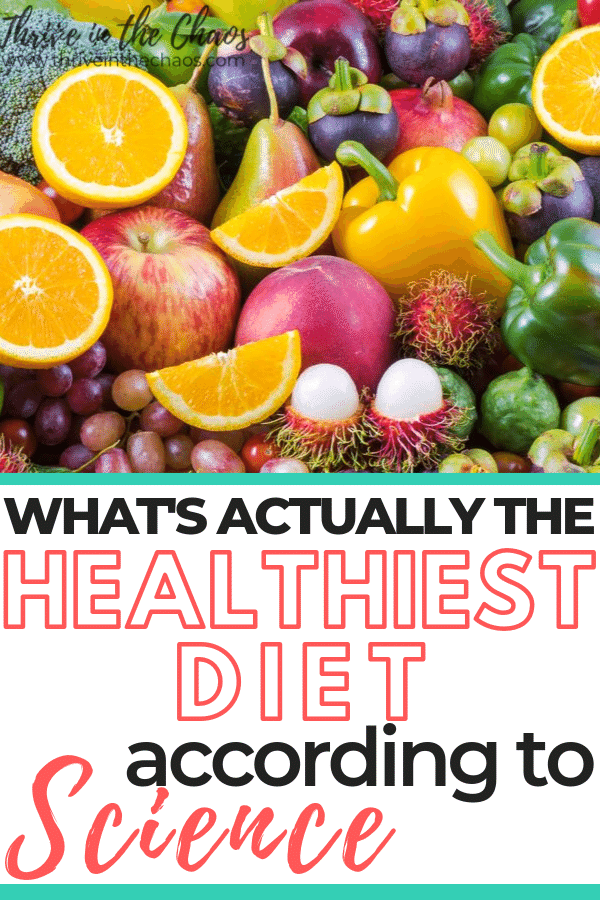
There are so many conflicting definitions of “healthy”, which one is right? Every year there’s a new fad diet and “super food” that will save us. Researching the latest low-carb diet craze got me looking for the healthiest diet. After all, what’s the point of a diet that makes you skinnier but kills you faster? Not a good trade-off in my opinion.
I was looking for a diet that was easy, and simple to follow. Something that didn’t involve tracking calories, points or macros. I wanted to develop a healthy relationship with food where it wasn’t a stress or burden. Where I could trust my body to tell me what it wanted, when.
By accident, I heard about nutritionfacts.org. I went to check it out and fell down the rabbit hole. How had I never heard of this site before!?
Nutrition Facts
Ok, so what is nutritionfacts.org? It’s a non-profit site started by Dr. Greger who’s sole objective is to read every scientific paper on nutrition that comes out and relay the findings. He researches the research. And makes sure they’re from reliable sources without ulterior motives.
Spoiler alert: a whole food plant based diet is the healthiest, according to science.
Dr. Greger
Who is Dr. Greger and why should you trust him? He’s an actual medical doctor who was convinced as a child of the benefits of eating a plant-based diet when it saved his grandma’s life and it’s why he decided to go into medicine. He was surprised when he got to medical school and nutrition was barely covered and there was nothing on a whole food plant-based diet.
When Dean Ornish published his revolutionary paper demonstrating how a plant-based diet can reverse heart disease (the number one killer in America), Dr. Greger assumed it would be a game changer, but nothing happened. He wondered if this groundbreaking paper could be ignored, what other research was out there that people just didn’t know about. He’s made it his life’s work to find out and tell the world.
In his book, How Not to Die, Dr. Greger shows how a plant-based diet can prevent and reverse the top 15 leading causes of death. I don’t know about you, but I’d like to avoid dying from completely preventable diseases!
Everything on nutritionfacts.org is free, it’s run by a nonprofit, there aren’t any ads and Dr. Greger isn’t peddling his own (or anyone else’s) products. He links to all the scientific papers he references, so you can read them too. The money from his book and cookbook is donated to the charity that runs nutritionfacts.org. Dr. Greger only recently started drawing a salary from nutrionfacts.org because his position as public health director for the Humane Society of the United States was eliminated.
I think it’s safe to say Dr. Greger isn’t just selling snake oil.
Whole Food Plant-Based
Ok, so what’s the healthiest diet? In Dr. Greger’s words,
“The best available balance of evidence suggests the healthiest diet is one that minimizes the intake of meat, eggs, dairy, and processed junk, and maximizes the intake of fruits, vegetables, legumes, whole grains, nuts and seeds, mushrooms, herbs and spices”.
Another way of putting it, whole food plant based (often shortened to WFPB).
What does whole food plant based mean? Dr. Greger defines whole food as food that hasn’t been over processed, “nothing bad added, nothing good taken away”. Plant-based is pretty self-explanatory, “real food that grows out of the ground”.
Dr. Greger developed a traffic light system to categorize what you should eat.
Green (foods you should eat more of): Unprocessed plant foods- fruits, vegetables, legumes, whole grains, nuts and seeds, mushrooms, herbs and spices
Yellow (foods you should eat less of): Processed plant foods and unprocessed animal products- Vegan meats and cheese, jam, packaged & pre-seasoned vegetables, beef, chicken, pork, seafood, eggs, etc
Red (foods you should avoid on a daily basis): Processed animal products- dairy products, sausage, deli meat, packaged cookies, soda, sugar, etc
In an effort to translate the “mountain of evidence into easy-to-make, day-to-day decisions”, Dr. Greger created a Daily Dozen checklist of recommendations to fit into your daily diet. For the explanation behind what was included in the daily dozen, check out his book, How Not to Die. Also note that this is the minimum you should be eating a day, don’t go hungry!
The Daily Dozen Checklist
 Beans: 3 servings
Beans: 3 servings- Berries: 1 serving
- Other fruit: 3 servings
- Cruciferous vegetables: 1 serving
- Greens: 2 servings
- Other vegetables: 2 servings
- Flaxseeds: 1 serving
- Nuts and seeds: 1 serving
- Herbs and spices: 1 serving
- Whole grains: 3 servings
- Beverages: 5 servings
- Exercise: 1 serving
There’s a free app for Android and Apple to help you track your daily dozen. It also gives you ideas of what foods fall into each category and what constitutes a serving.
That’s way easier to follow than counting calories, macros, or points. Plus with the traffic light system, you never have to feel like you can’t have something. As Dr. Greger said, “It matters little what healthy folks eat on their birthday, holidays, and special occasions. It’s the day-to-day stuff that adds up.” Just don’t make every day a food special occasion.
If you’re still not convinced, google “WFPB before and after” and you’ll find hundreds of people’s stories of weight and health transformations from eating a whole food plant-based diet.
Someone has demystified what a healthy diet is and it’s so simple. Eat whole food plant-based. There’s a trustworthy source for information on how to not just lose weight, but to improve your health and extend your life.
